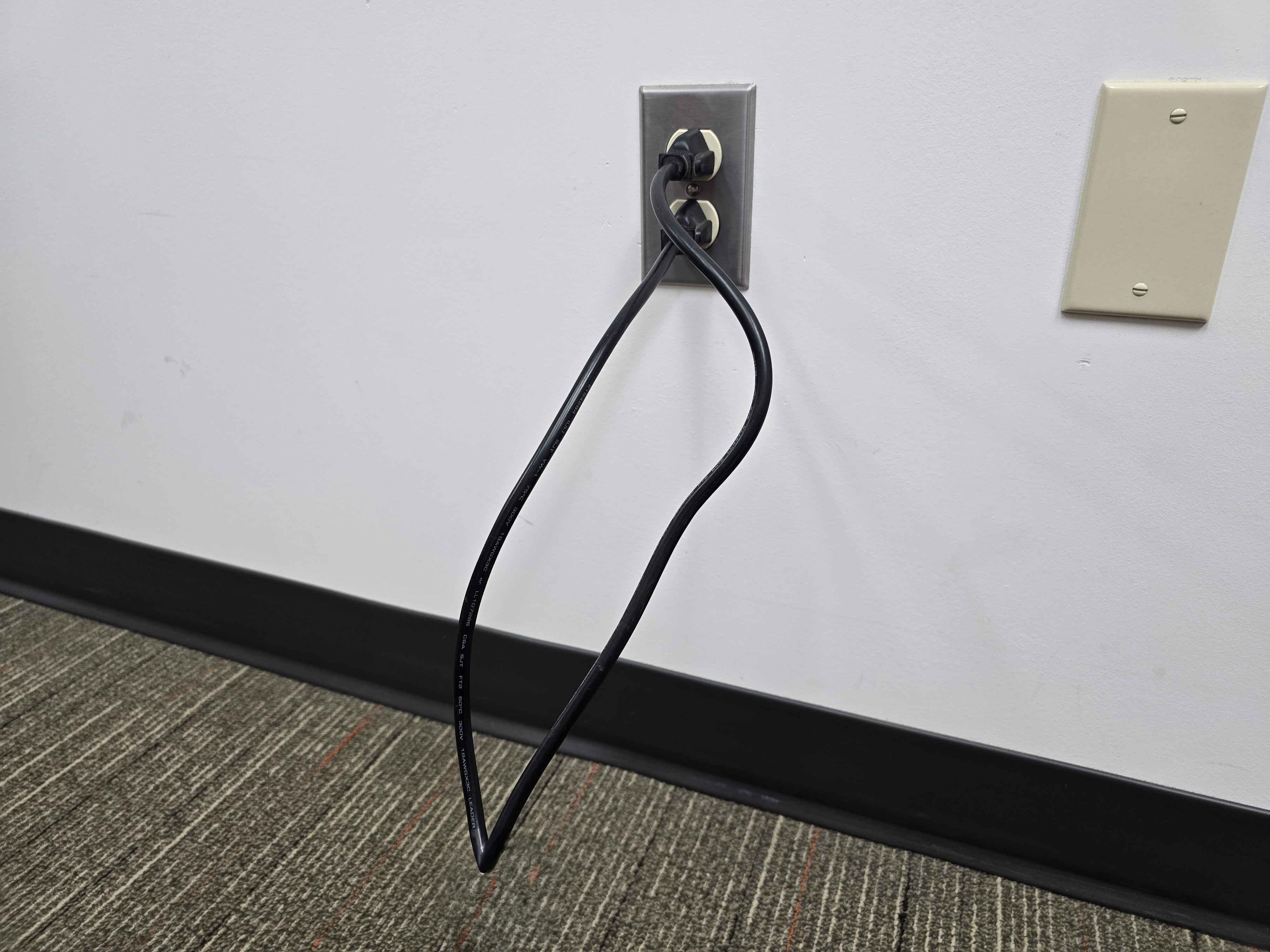this post was submitted on 25 Nov 2024
260 points (99.2% liked)
hmmm
5628 readers
4 users here now
For things that are "hmmm".
Rule 1: All post titles except for meta posts should be just plain "hmmm" and nothing else, no emotes, no capitalisation, no extending it to "hmmmm" etc.
founded 2 years ago
MODERATORS
you are viewing a single comment's thread
view the rest of the comments
view the rest of the comments

This would be perfectly safe provided nobody unplugged it.
Wired correctly this would just join the two hots together, the two grounds together, and the two neutrals together which is how they are already connected inside the outlet anyway, electrically speaking. But that'd only last right up until someone unplugged one end of it and touched the live prongs.
The two outlets could be on different circuits, if for example one of them is connected to a switch on a lighting circuit.
Then, the cable will be powering one circuit from the other. A circuit limited to 20A could draw 40A before blowing, causing damage to the wires.
Someone might do some wiring work on the lights, and shut off the lighting circuit, and still get zapped (though most electricians would test it before touching it, since breaker labels are rarely accurate).
There are many creative ways to die to a cable like this.
While this is technically possible by cutting the bus bars linking the upper and lower sockets, this is a duplex outlet and by default both sockets are internally connected. It's fantastically unlikely anyone would go out of their way to create the setup you described, which would also require by code for both circuits to be connected to a linked breaker so that if one is overloaded both circuits are tripped. Making one of the outlets switched would also create an extremely confusing situation for the user or building owner, which would inevitably result in a never-ending bitch session at whoever installed it in the first place, e.g. every time the cleaning crew plugs in their vacuum cleaner and this outlet "randomly doesn't work sometimes."
But then, if someone is running around with a ready-made double male mains cable in your building, all bets are probably already off.
Outlets where only one of the two sockets is controlled by a switch is extremely common for lighting in the USA.
Can confirm that it's extremely frustrating/confusing to have outlets where one socket is switched and the other is always on. Doesn't stop builders from doing it, unfortunately.
In Sweden it's default to have 3 phase available, and different groups of rooms are often on a different phase in bigger apartments or homes.
Connecting two different phases directly puts 400 V on a "short-circuited" wire instead of 230V with no current...
Most people would use it to solve Christmas light screw ups which means there would be another male and sticking out exposed later in the line. Just as dangerous there.
You can just wrap some duct tape around the exposed end.
You could "just" do a lot of things, but all of them start and end with requiring regular people (i.e., idiots) not to be stupid 100% of the time, which means that an eventual catastrophic failure is not only likely but outright guaranteed.
Extention cords are dangerous because they are not always the right gauge.
People get cheap extention cords and try to pull more power than the cord can handle and it ends up heating the cord and causing a fire.
It's why a lot of things say "Do not use an extention cord! Plug directly into wall." Because they know someone is going to use a dollar store extention cord on a space heater.
Not because the space heater won't work with an extention cord
Most people care about plug type (low profile) or color more than they do the quality or gauge of the wire.
Anyways, this cord could be dangerous like that if the gauge isn't the same or thicker than what's in the wall.
Of course old, and even newer, houses just don't have sanely placed and adequate outlets where they're needed.